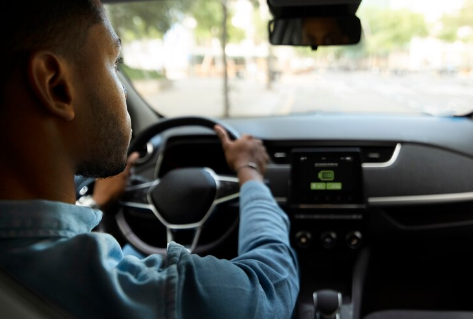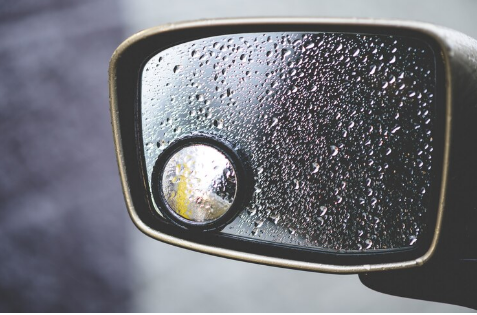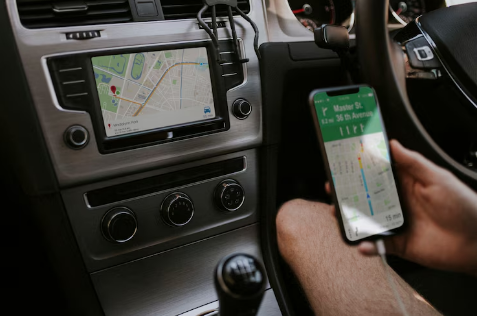Driving With Low Vision: What You Need to Know

Driving with low vision can be difficult, but it doesn't necessarily mean you have to stop. With the help of low vision aids and adaptive devices, many individuals can continue driving safely.
Table of Contents
These articles are written to enhance visibility and help manage the challenges that come with low vision, allowing for a more confident and secure driving experience.
Vision Tests and Legal Requirements
Before you hit the road, it's crucial to know where your vision stands. Vision tests are the first step. These tests measure your ability to see clearly, distinguish colors, and assess your peripheral vision.
Each state or country has specific legal requirements for vision standards in order to drive. These typically include minimum visual acuity (clarity of vision) and field of vision (how much you can see to the sides). If your vision doesn't meet these standards, you might need to use corrective lenses or other vision aids to drive legally.
Consulting with an Eye Care Professional
If you're unsure about your ability to drive safely, it's a good idea to talk to an eye care professional. They can conduct a comprehensive eye exam and offer advice tailored to your specific situation.
An eye care professional can also suggest low vision aids that might help you continue driving safely. They can guide you through the legal aspects of driving with low vision and help you understand what adjustments or restrictions might be necessary.
By regularly assessing your vision and staying informed, you can make smart decisions about your driving abilities and ensure you're staying safe on the road.
When to Consider Stopping Driving
Driving with low vision requires you to be honest with yourself about your capabilities. If you find yourself struggling to see road signs, read traffic signals, or notice pedestrians and other vehicles, it might be time to reconsider whether it's safe for you to drive.
Here are some signs that it may be time to stop driving:
- You feel nervous or anxious behind the wheel.
- Friends or family express concerns about your driving.
- You’ve had near misses or accidents recently.
- You have difficulty driving at night or in poor weather conditions.
It’s important to prioritize safety—not just your own, but that of others on the road as well.
Use Low Vision Aids for Driving
Prescription Glasses and Contact Lenses
One of the most common ways to enhance your vision while driving is by using prescription glasses or contact lenses. These are tailored to correct your specific vision issues, such as nearsightedness, farsightedness, or astigmatism.

Make sure your prescription is up-to-date, as even a small change in your vision can impact your ability to drive safely. Regular eye exams will ensure that your glasses or contacts are giving you the best possible vision.
Bioptic Telescopes
Bioptic telescopes are special devices mounted on glasses that allow you to see distant objects more clearly. They are often used by drivers with low vision to help them see traffic signs, signals, and other important details on the road.

These devices require some training to use effectively while driving. The driver looks through the lower part of the glasses for regular vision and tilts their head slightly to use the telescope for magnified views of distant objects. Bioptic telescopes can be a game-changer for those with low vision, but they do require practice to use safely.
Adaptive Lenses
Adaptive lenses, like photochromic lenses, automatically adjust to changes in lighting conditions. They darken in bright sunlight and lighten in dimmer conditions, reducing glare and improving overall visibility. These lenses can be especially helpful when driving in varying light conditions, such as going from bright sunlight to shade.

Polarized lenses are another option, reducing glare from reflective surfaces like wet roads or the hood of your car. These lenses can make it easier to see clearly, especially in bright sunlight or during early morning and late afternoon driving.
Blind Spot Mirrors and Vehicle Modifications
For those with peripheral vision loss, blind spot mirrors can be very helpful. These small mirrors attach to your side mirrors and provide a wider field of view, helping you to see vehicles that might otherwise be hidden from your sight.

Other vehicle modifications can also improve driving safety for those with low vision. These might include larger dashboard displays, high-contrast controls, or enhanced lighting inside the vehicle.
Some cars also offer advanced safety features like lane departure warnings and adaptive cruise control, which can help compensate for vision challenges.
GPS and Navigation Systems
Using a GPS or navigation system can reduce the cognitive load of driving, allowing you to focus more on the road rather than worrying about directions. Many modern GPS systems offer voice-guided instructions, so you don’t have to look away from the road to follow directions.

Some systems also provide real-time traffic updates, which can help you avoid sudden stops or other unexpected situations that might be more challenging with low vision.
Low Vision Safe Driving Strategies
- Right Time of Day to Drive
- Lighting Conditions: Driving during the day when natural light is available can improve visibility. Avoid driving at night or in low-light conditions if your vision is limited.
- Avoiding Glare: Midday sunlight can create glare, so driving in the early morning or late afternoon might be easier if glare is a concern.
- Plan Your Trips: Try to schedule your driving during times when visibility is at its best. For example, early mornings or late afternoons may offer better lighting and less glare.
- Avoiding High-Traffic Areas
- Reducing Stress: High-traffic areas can be overwhelming and increase the risk of accidents. Less busy roads are easier to navigate and require less split-second decision-making.
- Improving Focus: Fewer cars mean fewer distractions and less chance of missing important visual cues.
- Choose Routes Wisely: Plan your route to avoid congested areas. Use back roads or less traveled streets when possible.
- Check Traffic Reports: Before heading out, check traffic conditions to avoid peak times and busy roads.
- Using GPS and Other Navigation Tools
- Clear Directions: GPS devices and smartphone apps provide turn-by-turn directions, which can help you stay on course and reduce the need for visual navigation.
- Real-Time Updates: Many navigation tools offer real-time traffic updates and route adjustments, making it easier to avoid sudden changes or unexpected conditions.
- Choose User-Friendly Tools: Select a GPS or navigation app that is easy to read and use. Voice-guided directions can be particularly helpful.
- Keep the Device Visible: Mount your GPS or phone in a location where it’s easy to see without taking your eyes off the road for too long.
- Adjusting Vehicle Settings
- Improving Visibility: Properly adjusted mirrors and seat positions ensure you have the best possible view of the road and surroundings.
- Comfort and Control: Adjustments help you stay comfortable and maintain control over the vehicle, reducing the risk of accidents.
- Adjust Mirrors: Set your side and rearview mirrors to minimize blind spots and provide the best view of the road behind you.
- Set Your Seat Position: Make sure your seat is at a height and distance that allows you to see the road clearly and reach the controls easily.
- Use Vehicle Features: Utilize features like automatic headlights, windshield wipers, and rearview cameras to enhance visibility and safety.
How to Stay Safe on the Road with Low Vision
- Defensive Driving Techniques
- Staying Alert: Defensive driving means being aware of your surroundings and anticipating potential hazards on the road.
- Keeping a Safe Distance: Maintain a safe distance from other vehicles to give yourself time to react if something unexpected happens.
- Scan the Road: Regularly check your mirrors and look ahead to anticipate traffic changes and obstacles.
- Use Signals: Always use your turn signals to communicate with other drivers and avoid sudden maneuvers.
- Avoid Distractions: Stay focused on driving and avoid using your phone or other distractions.
- Recognizing When to Take a Break
- Preventing Fatigue: Driving while tired can impair your reaction times and decision-making abilities.
- Reducing Stress: Taking breaks can help reduce stress and prevent burnout from long periods of driving.
- Listen to Your Body: If you start to feel tired, dizzy, or strained, it’s time to take a break.
- Plan Rest Stops: Schedule regular stops on longer trips. Use rest areas or safe locations to stretch, relax, and refresh.
- Short Breaks: Even short breaks every hour can help maintain alertness and reduce fatigue.
- Handling Emergencies While Driving
- Stay Calm: In an emergency, staying calm is crucial for making quick and effective decisions.
- Know Your Options: Understand how to safely handle common driving emergencies such as sudden braking, skidding, or a flat tire.
- Emergency Kit: Keep an emergency kit in your vehicle, including items like a first aid kit, flashlight, and basic tools.
- Pull Over Safely: If you experience an emergency, find a safe place to pull over, such as the shoulder of the road, away from traffic.
- Seek Assistance: If you cannot handle the situation on your own, call for roadside assistance or emergency services.
Support and Resources
Support groups for individuals with low vision offer a community where you can share experiences, get advice, and find emotional support. These groups often provide information about local resources and services, as well as tips for managing daily challenges related to low vision.
- Finding Support Groups
- National Federation of the Blind (NFB): Offers local chapters and support groups nationwide. NFB Local Chapters
- American Council of the Blind (ACB): Provides resources and support through local affiliates. ACB Local Affiliates
- VisionAware: Connects individuals with low vision through support groups and online forums. VisionAware Support Groups
Organizations for Low Vision Drivers
Organizations dedicated to drivers with low vision can provide resources, training, and advocacy. They focus on helping individuals with low vision maintain their driving abilities safely.
Key Organisations Include;
- Driver Rehabilitation Specialists (DRS): Offers assessments and training for drivers with low vision.DRS Locator
- The National Organization for Vehicle Accessibility (NOVA): Provides resources for adapting vehicles for drivers with disabilities.
- American Association of Motor Vehicle Administrators (AAMVA): Offers information on licensing and driving regulations for individuals with vision impairments.



